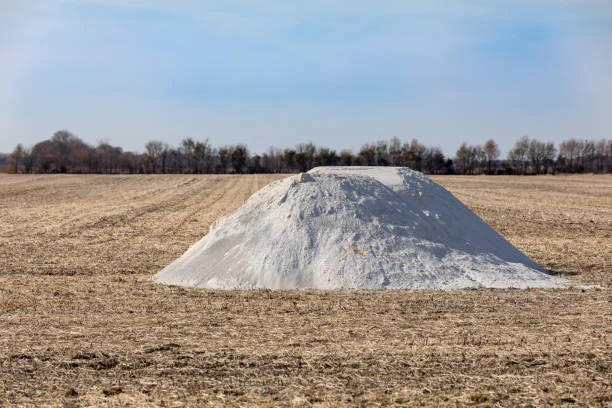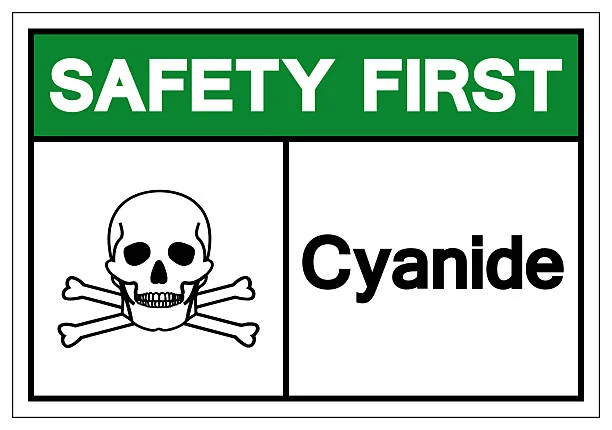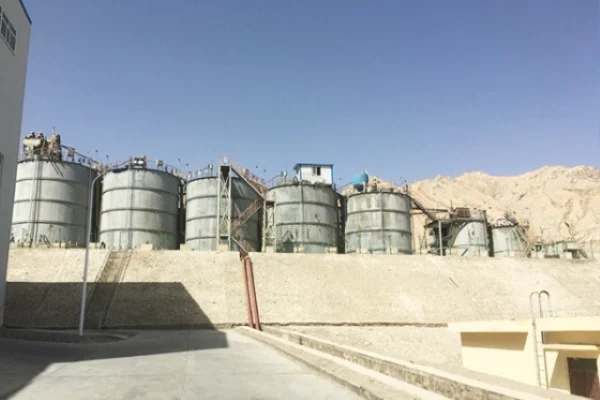Introduction
Gold cyanidation, also known as cyanide leaching, is a widely used process for extracting gold from raw ore. In this process, Sodium cyanide is employed to dissolve gold within the rock, as gold itself is not soluble in cyanide. However, the presence of various impurities and the chemical environment of the ore can significantly affect the efficiency and cost of the extraction process. This is where Calcium oxide plays a crucial role.
Adjusting the pH Value of the Pulp
One of the primary functions of calcium oxide in gold cyanidation is to regulate the pH of the ore pulp. When calcium oxide is added to water, it reacts to increase the concentration of hydroxide ions in the solution, thereby raising the pH value.
In the cyanidation process, it is essential to maintain a high pH level, typically above 11. This is because Sodium Cyanide hydrolyzes in an aqueous solution. The degree of this hydrolysis is related to the pH value of the solution. At a high pH, the equilibrium of the hydrolysis reaction shifts to reduce the concentration of hydrogen cyanide in the solution. Since hydrogen cyanide is volatile and can escape from the system, maintaining a high pH helps prevent the loss of cyanide in the form of hydrogen cyanide gas. This is crucial as the key component for gold leaching is the cyanide ion, and any loss of cyanide would lead to increased consumption of sodium cyanide and reduced efficiency of Gold extraction.
Inhibiting the Hydrolysis of Cyanide
As mentioned above, the hydrolysis of sodium cyanide can result in the formation of hydrogen cyanide, which is not only a loss of the valuable cyanide reagent but also poses environmental and safety risks due to its toxicity. Calcium oxide helps inhibit this hydrolysis reaction. By increasing the pH of the solution, it reduces the concentration of hydrogen ions available for the reaction with cyanide ions to form hydrogen cyanide. This ensures that a higher proportion of the cyanide remains in the form of cyanide ions, which is essential for the dissolution of gold.
Eliminating the Adverse Effects of Some Ions
Ore often contains various impurities such as copper and iron ions, which can have a negative impact on the gold cyanidation process. For example, copper ions can react with cyanide to form complex compounds, thereby consuming cyanide and reducing its availability for gold dissolution. Iron ions, especially ferric ions, can also interact with cyanide, forming ferricyanide complexes.
Calcium oxide can help mitigate these effects. In an alkaline environment created by calcium oxide, some of these metal ions can form precipitates. For instance, ferric ions can react with hydroxide ions to form ferric hydroxide precipitate. This precipitation reduces the concentration of iron ions in the solution, preventing them from consuming cyanide and interfering with the gold leaching process.
Potential Negative Effects at High pH
While calcium oxide is beneficial in many aspects of the cyanidation process, if the pH value is too high (usually above 12), it can have a negative impact on gold extraction. At extremely high pH levels, calcium oxide can cause the formation of a layer of calcium peroxide on the surface of gold particles. This layer acts as a barrier, preventing the direct contact between the cyanide ions and the gold surface, thus hindering the dissolution of gold. Therefore, it is crucial to carefully control the amount of calcium oxide added to ensure that the pH is maintained at an optimal level for efficient gold extraction.
Conclusion
In summary, calcium oxide plays multiple important roles in the gold extraction process using sodium cyanide. It adjusts the pH of the ore pulp, inhibits the hydrolysis of cyanide, and helps eliminate the adverse effects of some metal ions. However, proper control of the pH is essential to avoid potential negative impacts on gold extraction. Understanding these functions of calcium oxide can help optimize the cyanidation process, improve the efficiency of gold extraction, and reduce the consumption of sodium cyanide, which is not only economically beneficial but also environmentally friendly by minimizing the release of toxic cyanide compounds.
- Random Content
- Hot content
- Hot review content
- Sodium Amyl Xanthate (SAX) 90%, Mining chemical, mining flotation reagent
- Expanded AN explosive
- Sodium bisulfite 99% High Quality Factory Supply
- Seismic Electric Detonator(Anti static,Water Resistance)
- Dodecylbenzenesulfonic acid
- 99% Animal Feed Additive DL Methionine
- Ethylene carbonate
- 1Discounted Sodium Cyanide (CAS: 143-33-9) for Mining - High Quality & Competitive Pricing
- 2China's New Regulations on Sodium Cyanide Exports and Guidance for International Buyers
- 3Sodium Cyanide 98% CAS 143-33-9 gold dressing agent Essential for Mining and Chemical Industries
- 4International Cyanide(Sodium cyanide) Management Code - Gold Mine Acceptance Standards
- 5China factory Sulfuric Acid 98%
- 6Anhydrous Oxalic acid 99.6% Industrial Grade
- 7Oxalic acid for mining 99.6%
- 1Sodium Cyanide 98% CAS 143-33-9 gold dressing agent Essential for Mining and Chemical Industries
- 2High Quality 99% Purity of Cyanuric chloride ISO 9001:2005 REACH Verified Producer
- 3Zinc chloride ZnCl2 for High Molecular Weight Polymers Initiator
- 4High Purity · Stable Performance · Higher Recovery — sodium cyanide for modern gold leaching
- 5High Quality Sodium Ferrocyanide / Sodium Hexacyanoferr
- 6Gold Ore Dressing Agent Safe Gold Extracting Agent Replace Sodium Cyanide
- 7Sodium Cyanide 98%+ CAS 143-33-9












Online message consultation
Add comment: